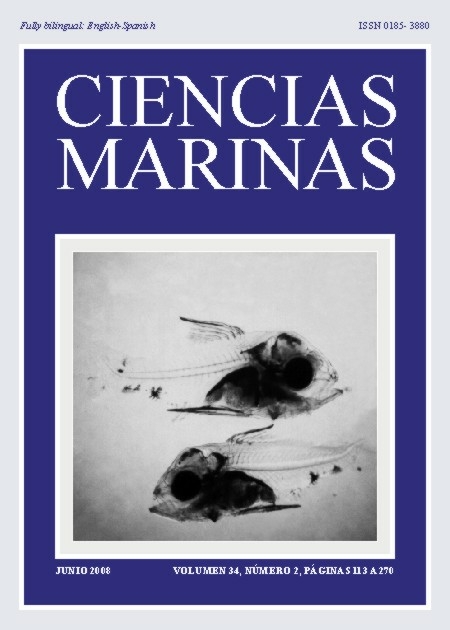Mapping of the spatial distribution of benthic habitats in the Gulf of Batabanó using Landsat-7 images
Main Article Content
Abstract
The spatial distribution of benthic habitats in the Gulf of Batabanó obtained by remote sensing, using five images from the Landsat-7 Enhanced Thematic Mapper Plus (ETM+) satellite sensor, is reported for the first time. The map covers a total underwater area of 21,305 km2 and is presented at the 1:250,000 scale. Five benthic habitats were identified within this area and located using the supervised classification technique: medium- to high-density seagrass, low-density seagrass, sand with scarce vegetation, mud with scarce vegetation, and rock. Seagrass covers 64.85% (13,818 km2) of the total area, while 35.15% (7,487 km2) corresponds to the remaining benthic habitats with or without scarce vegetation. Both the underwater vegetation (seagrass and macro seaweed) and the substratum types were considered. Results were confirmed by in situ measurements obtained from three research cruises between 2003 and 2005. This map represents an important characterization of the Cuban platform waters in order to better understand these ecosystems, and can be used in future change detection analyses to monitor the health of benthic habitats in the Gulf of Batabanó.
Downloads
Article Details
This is an open access article distributed under a Creative Commons Attribution 4.0 License, which allows you to share and adapt the work, as long as you give appropriate credit to the original author(s) and the source, provide a link to the Creative Commons license, and indicate if changes were made. Figures, tables and other elements in the article are included in the article’s CC BY 4.0 license, unless otherwise indicated. The journal title is protected by copyrights and not subject to this license. Full license deed can be viewed here.

